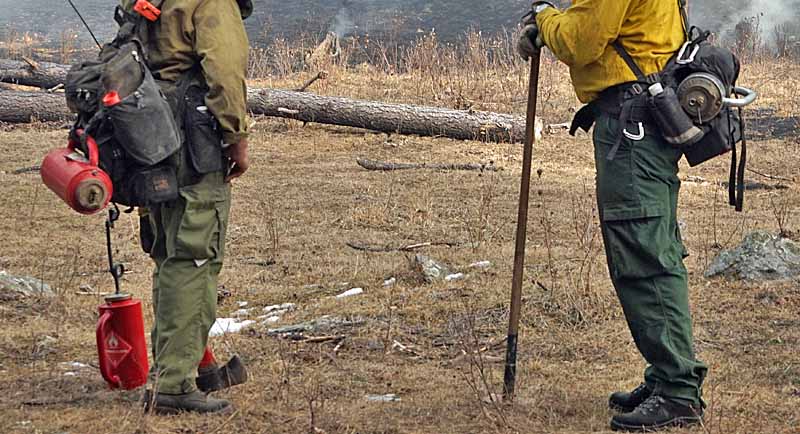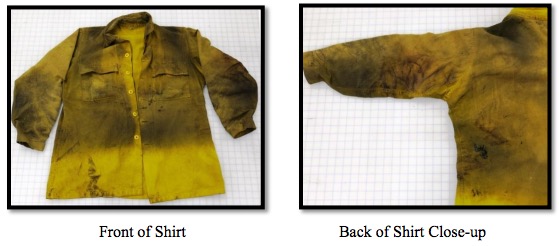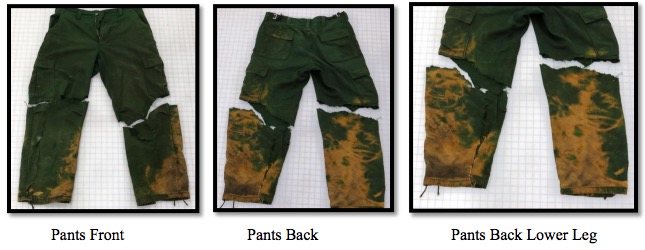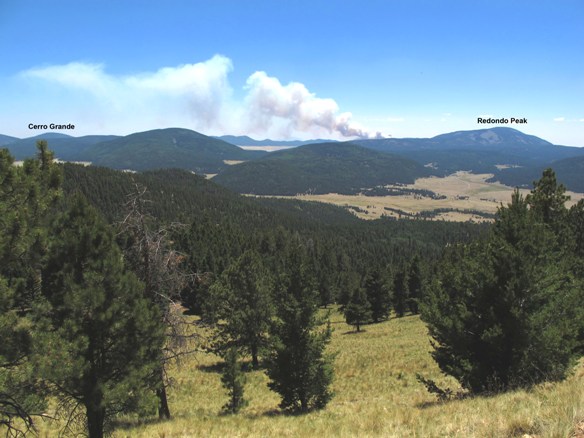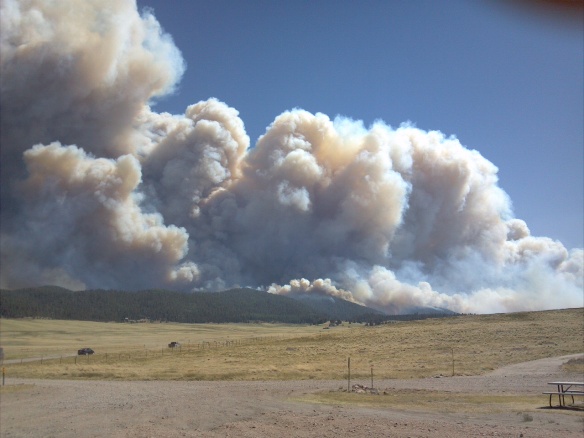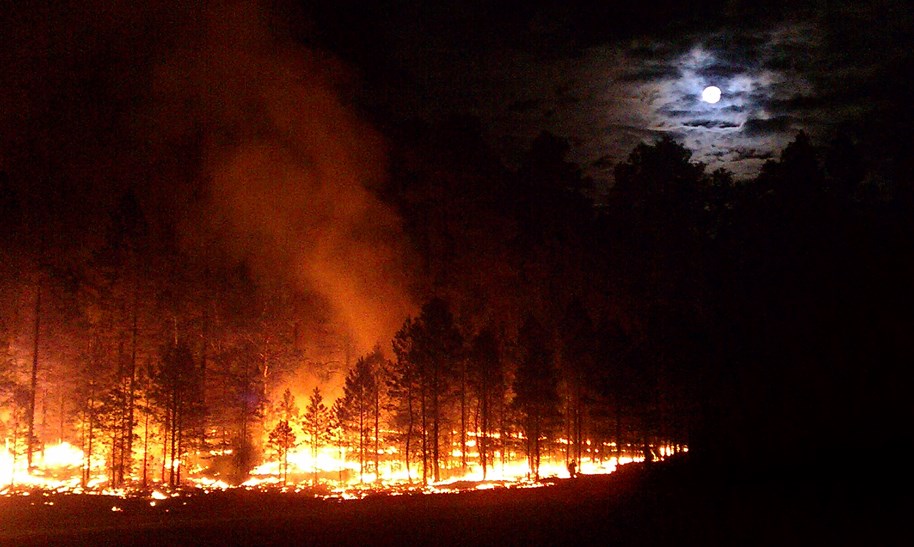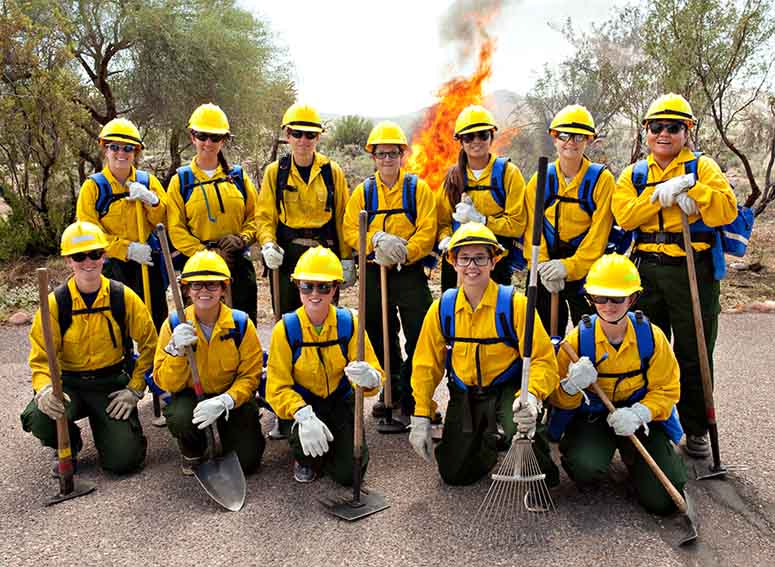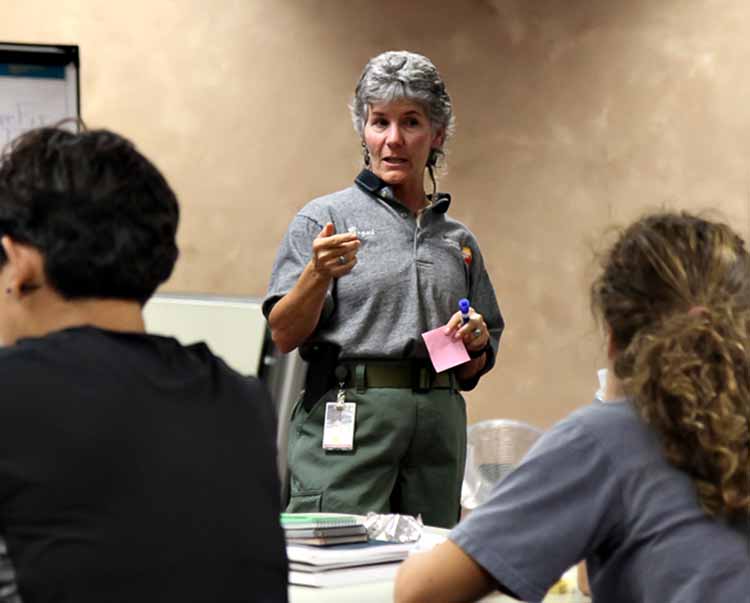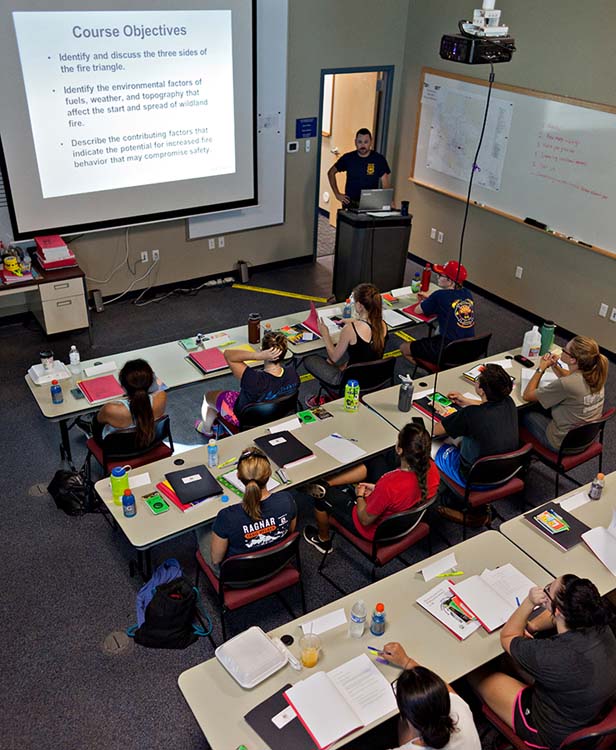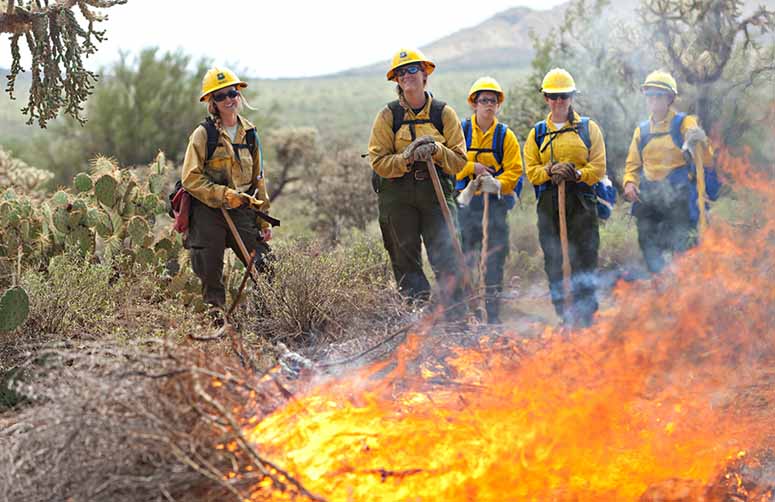Last summer a firefighter received severe burns to his back, both legs, and left arm after a drip torch attached to the pack on his back leaked fuel which ignited. The accident occurred September 9, 2015 on the Perdida Fire managed by the Bureau of Land Management northwest of Taos, New Mexico. The firefighter was one of seven igniters assigned to the fire which had a total of nine personnel.
The individual who was injured had been igniting with a drip torch while he carried an extra one attached to the pack on his back. The torch leaked fuel which caught fire.
From the recently released report about the incident:
…Igniter #1 saw that the victim’s line gear and back of his legs were on fire so he tried to put the fire out with dirt and by patting at the flame with his gloved hand. Igniter #1 told the victim to get on the ground and they both fell together. The victim got back up and ran while trying to get his glove off and then his pack, successfully. The victim then stumbled but regained his footing briefly before falling back to the ground. At this point, Igniters #1 and #3 converged and patted out the fire on the victim’s pants…<
The photos below are from the report.
One of the issues pointed out in the report is a significant delay in requesting a medevac. About 40 minutes elapsed before medevac was requested, and that was for a ground ambulance even though the victim apparently had second and third degree burns. That request was quickly upgraded to transport by helicopter. The report concluded that according to the burn injury protocol a medevac should have been initiated upon the determination of second and third degree burns and the remoteness of the incident.
The medevac pilot was unable to communicate with the personnel on the ground because he could not program the frequency into the helicopter’s radio.
The lat/long was called in to dispatch from the incident scene 23 minutes after the helicopter was requested (about an hour after the accident occurred), and four minutes before it landed at the extrication point.
The report recommended that firefighters should avoid carrying extra drip torches on their packs during ignition operations.
We did not see anything in the report about how fire resistant clothing that has not been washed for an extended period of time may, or may not, cause the clothing to lose some of its resistance to fire. But it did say “PPE [personal protection equipment] should be kept clean and inspected often for damage and fuel contamination”.
